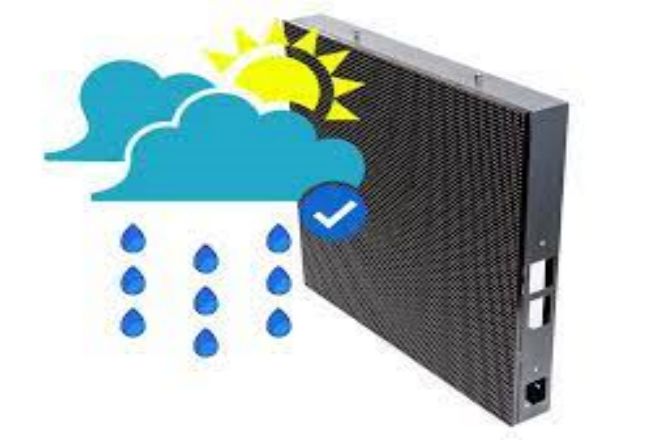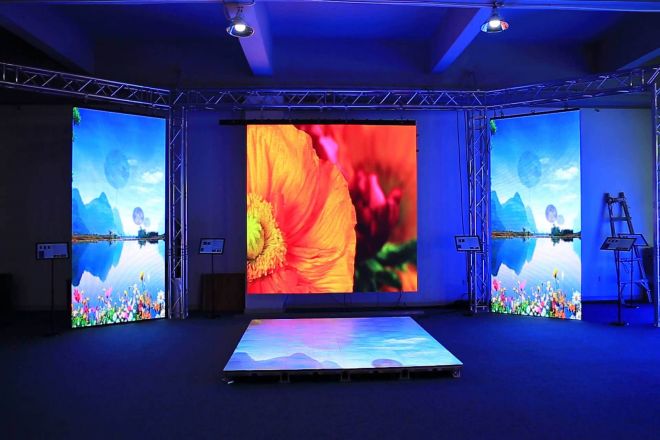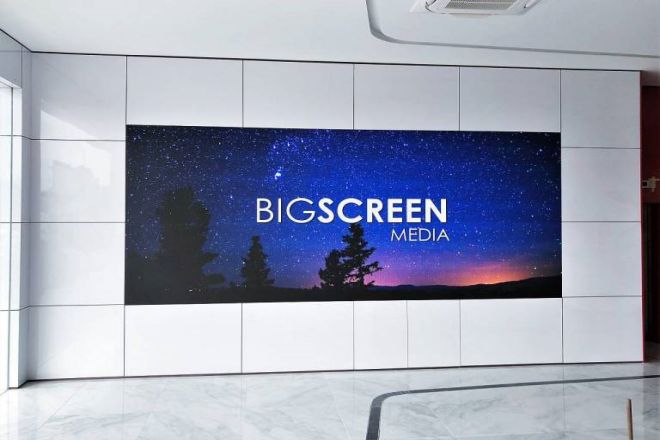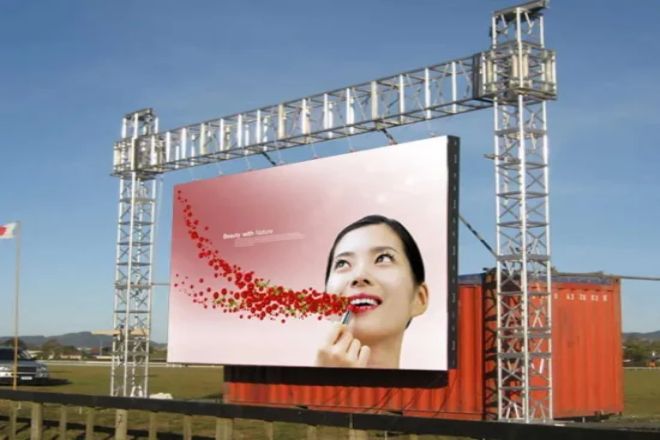序章

With the progress of science and technology, LED display screens have been widely used in various fields, such as commercial advertising, traffic instructions, stage background, etc.
However, the impact of a humid environment on the LED display cannot be ignored. This article will deeply discuss the harm of humidity to LED displays and how to take effective moisture-proof measures.
1. The working principle of LED display and the harm of humidity
The LED display is composed of multiple LED lamp beads, which drive each lamp bead to emit different colors of light through current, thus forming a complete image. The harm of humidity to LED displays is mainly reflected in the following aspects:
Circuit corrosion: In a humid environment, moisture easily penetrates the interior of the display screen, resulting in corrosion of the metal circuit on the circuit board, causing short circuit or circuit breakage, and affecting the normal operation of the display screen.
Decreased display effect: There is a protective film on the surface of the LED lamp beads, which is in a humid environment for a long time. The protective film is prone to erosion, resulting in a decrease in the brightness of the lamp beads and affecting the display effect.
Equipment life is shortened: In a humid environment, the electronic components inside the display screen are prone to oxidation and aging, resulting in shorter equipment life.
2. Wrong practice of LED display moisture protection

In your previous moisture-proof measures, is your method correct? Here are a few mistakes that are particularly easy to make when the LED display is particularly moisture-proof. Let’s see if you are tricked:
- Ignoring environmental humidity:
Do not pay attention to the humidity of the environment of the LED display screen, and do not take the necessary moisture-proof measures in time, resulting in the display screen in a high-humidity environment for a long time and is easily damaged.
- Ignore the sealing of the display:
The sealing of the LED display is essential for moisture resistance. If the sealing of the display screen is not good, moisture can easily penetrate through the gap, resulting in a short circuit or corrosion of the internal circuit. Therefore, when installing and maintaining the LED display, it should be ensured that it is well sealed.
- Long-term non-use of display:
Long-term non-use of LED display will increase the risk of moisture in its internal circuit. Therefore, it is recommended to turn on the display screen regularly to dispel the internal moisture with the heat generated by itself.
- Irregular inspection and maintenance:
Irregular inspection of the waterproof and moisture-proof performance of the LED display, and failure to deal with potential problems in time, such as loose screws, aging sealants, etc., may lead to a decline in the moisture-proof performance of the display screen.
3. LED display moisture-proof measures
If you have the above wrong practices or don’t know how to prevent moisture, please read the following carefully!
The moisture-proof measures of the LED display mainly include the following aspects:
1). For 屋内用 LED ディスプレイ:

- Use a moisture-proof box or moisture-proof cabinet:
For a small or removable LED display, you can consider placing it in a moisture-proof box or moisture-proof cabinet when not in use. These devices usually have sealing and humidity control functions, which can effectively protect internal items from moisture.
- Establish a humidity control system:
For indoor space with an LED display, you can consider installing a humidity control system, such as a humidity sensor and an automatic dehumidification device.
These systems can monitor indoor humidity in real time and automatically start dehumidification equipment when the humidity exceeds a certain threshold so as to keep the indoor environment dry.
- Increase the indoor temperature:
Under the premise of not affecting the comfort of personnel and the normal operation of the equipment, appropriately increasing the indoor temperature will help reduce the relative humidity because the relative humidity is the ratio of the partial pressure of water vapor in the air to the saturation pressure of water at the same temperature.
When the temperature rises, the saturation pressure increases and the relative humidity decreases accordingly.
- Strengthen the structural sealing of the display screen:
In the design and manufacturing stage of the display screen, its structural sealing can be strengthened, such as using waterproof rubber rings, sealants, and other waterproof materials to seal the seams and threading holes of the display screen, so as to reduce the possibility of moisture entering the interior of the display screen through the structural gap.
- 定期的な点検とメンテナンス:
Regular inspection and maintenance of the LED display is an important part of moisture-proof measures.
Through regular inspection, problems such as water inlet and water seepage that may exist on the display screen can be found and dealt with in a timely manner to prevent the expansion of faults caused by humidity. At the same time, regular maintenance can also clean the dust on the surface and inside of the display screen to maintain its good heat dissipation performance.
- Waterproof coating or material:
For some key components or interfaces, you can consider using a waterproof coating or waterproof material to enhance its waterproof performance. For example, apply a layer of waterproof paint on the surface of the circuit board or use a waterproof connector.
2). For 屋外用 LED ディスプレイ:

- Regular dust cleaning:
The outdoor LED display is exposed to the air for a long time, which makes it easy to accumulate dust and dirt. This dust and dirt will not only affect the heat dissipation performance of the display but also may absorb moisture in the air and aggravate the moisture resistance of the display.
Therefore, it is necessary to regularly clean up the dust and dirt attached to the inside and outside of the display to keep the display clean and dry.
- Waterproof shell and sealing design:
Ensure that the shell of the LED display has good waterproof performance, and all external interfaces and gaps should be effectively sealed with waterproof rubber rings, sealants, or other waterproof materials to prevent moisture from infiltration.
- Drainage and drainage design:
Design drainage holes and drainage channels at the bottom and side of the LED display so that it can be discharged in time when rainwater or condensed water is generated to prevent water from accumulating inside.
- 定期的な点検とメンテナンス:
Regularly inspect the outdoor LED display, especially in the rainy season or wet season, check the waterproof performance, drainage system, and electrical connection part of the display screen, and find and deal with potential problems in time.
- Preventive maintenance measures:
Before the rainy season, carry out a comprehensive inspection and maintenance of the LED display, including cleaning the surface, tightening screws, checking sealing performance, etc., to ensure that the display can work properly in the wet season.
結論
That’s all about the moisture-proof methods of LED display. Have you learned it? If you want to know more about LED displays, お問い合わせください!
